Artificial Ice: Best Ice Simulator for Skaters to Practice at Home
When it comes to practicing figure skating or ice hockey at home, traditional ice rinks are not always accessible or convenient.
However, advances in technology now provide a solution for skaters to improve their skills at their own convenience.
Welcome to the world of artificial ice, a realistic ice simulator that offers the best experience for at-home practice.
Artificial ice surfaces are designed to closely mimic the feeling and glide of real ice, providing an exceptional practice environment for skaters of all skill levels.
With different options available in the market, you can easily find an ideal solution tailored to your specific needs.
CREATE YOUR OWN HOME ARTIFICIAL ICE SIMULATOR WITH POLYGLIDE SYNTHETIC ICE
From simple slick floor tiles to advanced full-rink systems, these amazing products have the potential to transform your practice experience like never before.
Not only do these ice simulators save time and money, they also help you maintain and enhance your skating skills in a comfortable, familiar setting.
Start exploring the world of artificial ice and see how it can become a crucial part of your at-home training regimen for figure skating or ice hockey.
The journey to mastery has never been more accessible or enjoyable!
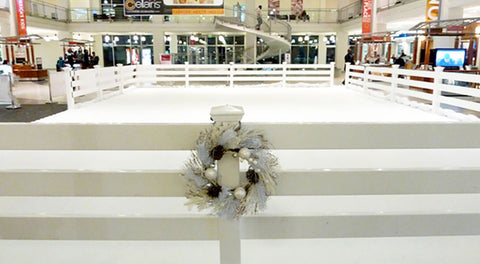
Understanding Artificial Ice
Artificial ice or synthetic ice is made from polymer materials, such as polyethylene, which come in the form of synthetic ice tiles or synthetic ice panels.
There are two common types of polyethylene used in creating synthetic ice: high-density polyethylene (HDPE) and ultra-high molecular weight polyethylene (UHMWPE).
These materials allow skaters to glide easily across the surface, mimicking the experience on real ice.
The design of synthetic ice tiles and panels involves a special process that creates a smooth and durable surface.
The tiles or panels interlock seamlessly, providing a consistent and even skating surface for optimal performance.
Benefits of Artificial Ice for Home Use
- Convenience: Artificial ice provides skaters with the opportunity to practice in the comfort of their own home, without the need to travel to an ice rink.
- Cost-effective: Investing in Artificial ice panels or tiles can be more cost-effective in the long run, as you save on costs associated with ice rink memberships or rentals.
- Environmentally friendly: Unlike traditional ice rinks, Artificial ice does not require water or refrigeration, making it a more environmentally sustainable option.
- Year-round access: With Artificial ice, you can practice your skating skills all year round, regardless of the season or weather conditions.
- Durability: Quality Artificial ice surfaces are highly durable and can withstand constant use, while still maintaining their performance.
Artificial ice is a great solution for skaters looking to practice at home.
With its various benefits, such as convenience, cost-effectiveness, and year-round access, synthetic ice provides an excellent alternative to traditional ice rinks.
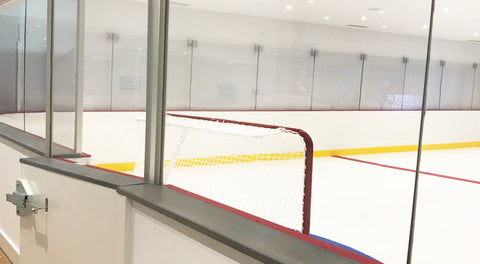
Installation and Maintenance
Setting up an artificial ice rink is quite straightforward and easy to install. First and foremost, choose a suitable location for your rink, such as indoor, residential areas, or garages.
Ensure the space is clean and flat.
Prioritize a design that meets your specific needs.
Assembly:
Next, assemble your rink using dovetail or interlocking panels.
These panels are self-lubricating, providing a smooth and long-lasting surface for skating.
A typical installation process might consist of the following steps:
- Layout the panels: Position the panels on the floor, following your intended rink design.
- Interlock the panels: Connect the panels using their dovetail or interlocking edges. Ensure that the connection is tight and secure.
- Secure the perimeter: Add edge protectors or rink borders (optional) to provide a clean finish and additional safety.
It's worth mentioning that these synthetic ice rinks are generally low-maintenance, making them perfect for at-home practice.
The "Three C's" for Synthetic Ice Maintenance
Maintaining the quality and performance of your artificial ice is crucial, but fortunately, it doesn't require a lot of effort, just follow the "Three C's" rule:
- Cleaning: Remove any debris or dust from the surface regularly using a soft broom, vacuum, or damp cloth to maintain the skating surface.
- Conditioning: Conditioning your surface while cleaning can help loosen dirt from the surface. Ensure that you use only approved lubricants or conditioners to maintain your rink correctly.
- Coating: Even though artificial ice rinks are self-lubricating, additional lubricants will maximize your rinks performance and glide.
With proper care and maintenance, your synthetic ice rink will remain a long-lasting and valuable addition to your home skating practice.
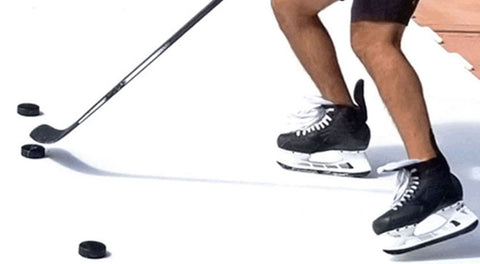
Skating Performance on Artificial Ice
Artificial ice provides an opportunity for skaters to improve their performance and skills at home.
By practicing on this surface, you can focus on specific areas of your skating technique. For example:
- Balance: Artificial ice helps you maintain a better balance, as it requires extra effort to maintain stability compared to real ice.
- Footwork: Practice intricate footwork and edgework on artificial ice to refine your skills, as the added friction encourages precision.
- Figure skating training: As a figure skater, artificial ice allows you to work on spins, jumps, and other essential elements sans the time-constraints typical of ice rinks.
Practice on artificial ice refines your overall technique ensuring it translates well onto real ice.
Adjustments for Skaters Transitioning to Synthetic Ice
When transitioning to synthetic ice, some adjustments in your skating technique will be necessary due to differences in friction and blade wear.
- Friction: Synthetic ice offers increased resistance compared to real ice. Be prepared to exert more effort when starting, stopping, and turning. Embrace the added friction as part of your training routine—this will develop your strength and endurance.
- Blade wear: Expect slightly accelerated blade wear on artificial ice. Regularly monitor and maintain your blades to extend their lifespan.
- Sharpening: Blades may require more frequent sharpening, though the process remains the same.
- Technique adjustments: Preserve your skating technique by making minor adjustments — focus on keeping your knees bent and lean into turns more aggressively.
By incorporating these adjustments into your training, you'll notice significant improvements in your balance, performance, and overall skating technique both on artificial and real ice.
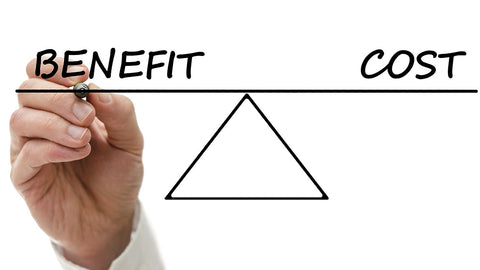
Cost Considerations and Investments
When looking to invest in an artificial ice surface for your home, it's important to consider both the initial and ongoing costs.
To begin with, you'll need to determine your budget for the purchase and installation.
The initial cost will largely depend on the size and type of artificial ice you choose.
For example, synthetic ice panels typically range from $10 to $25 per square foot, while sheet-based systems can be more cost-effective at around $5 to $10 per square foot.
In addition to the initial cost, you should also factor in any necessary maintenance expenses.
Artificial ice surfaces require regular cleaning and care to ensure they remain in top condition.
This may include:
- Sweeping or vacuuming debris
- Occasional mopping or wiping with a damp cloth
- Applying glide enhancer or surface conditioner
Each of these tasks can impact your ongoing costs, so it's crucial to factor them into your budget.
Long-Term Value and Durability
Another key consideration when investing in an artificial ice surface is its durability and long-term value.
High-quality artificial ice can last for years with proper care, so it's important to choose a product with a strong warranty and a reputation for durability.
This not only ensures you get the most out of your investment, but it also contributes to the safety and effectiveness of your at-home skating practice.
To determine the long-term value and durability of an artificial ice product, ask the following questions:
- What is the warranty period, and what does it cover?
- How resistant is the surface to wear and tear from skates and other equipment?
- Are there any customer reviews or testimonials available that speak to the product's longevity?
By doing your research and considering these factors, you can find an artificial ice surface that offers the best balance between affordability, durability, and ongoing maintenance costs.
This ensures you can make the most of your investment for many years to come.
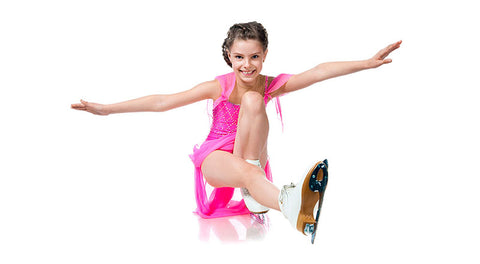
Advancing Your Skating Goals at Home
Whether you are a figure skater or a hockey player, artificial ice provides an excellent opportunity to practice your skills from the comfort of your home. Here are the main benefits:
-
Flexibility: With artificial ice, you have the freedom to skate whenever you want, without being restricted by ice rink schedules or weather conditions.
-
Accessibility: Skate anytime, with no need for travel or expensive ice time.
-
Training and Skill Development: Continuous practice at home allows you to focus on perfecting techniques such as jumps, spins, and shooting. This, in turn, helps build muscle memory and ultimately improves your on-ice performance.
Figure Skaters can benefit from:
- Perfecting jumps and spins
- Mastering intricate footwork
- Refining their routine
Hockey Players can improve their:
- Skating speed and agility
- Shooting accuracy
- Puck handling skills
Year-Round Training and Skill Advancement
Artificial ice offers year-round training, allowing you to advance your skills at a much faster pace in comparison to seasonal ice rinks.
As a competitive skater, this means you can stay sharp and maintain optimal performance levels throughout the year.
| Advantages | Figure Skaters | Hockey Players |
|---|---|---|
| Year-Round Training | ✔️ | ✔️ |
| Skill Advancement | ✔️ | ✔️ |
| Convenience and Time Efficiency | ✔️ | ✔️ |
By investing in an artificial ice setup at home, you are taking control of your skating journey and making significant strides towards achieving your goals.
Embrace the opportunity to refine your skills, develop new techniques, and enjoy the convenience of practicing whenever you desire.

Frequently Asked Questions
What are the benefits of using synthetic ice for at-home skating practice?
Using synthetic ice for at-home skating practice offers several benefits.
Firstly, it allows you to practice anytime, regardless of weather conditions.
Secondly, synthetic ice requires less maintenance compared to real ice, saving you both time and money.
Additionally, synthetic ice is environmentally friendly as it doesn't require water or electricity for upkeep, making it a more sustainable option.
How does the experience of skating on synthetic ice compare to real ice?
While there is a slight difference in feel when skating on synthetic ice compared to real ice, advanced materials and technologies have significantly narrowed the gap.
High-quality synthetic ice offers a smooth and consistent glide, mimicking the experience of skating on real ice.
It may take a short adjustment period to get used to the surface, but many skaters find the transition relatively easy.
Which synthetic ice brand offers the best quality for serious skaters?
Finding the right synthetic ice brand depends on your preferences and expectations.
Each brand offers different benefits in terms of surface quality, panel thickness, and glide factor.
Research and comparisons are essential to ensure you find the perfect fit for your needs.
Can skaters perform the same maneuvers on artificial ice as on real ice?
Yes, skaters can perform the same maneuvers on artificial ice as they can on real ice, such as spins, jumps, and edge work.
However, it's crucial to invest in high-quality artificial ice that simulates real ice as closely as possible to ensure optimal performance.
Practicing on a poor-quality surface may hinder your ability to perform certain moves and may require more effort, affecting your muscle memory when transitioning back to real ice.
What factors should be considered when setting up a artificial ice rink at home?
When setting up a artificial ice rink at home, you should consider the available space, the quality and type of synthetic ice, and the edge system for connecting panels.
Additionally, ensure the surface is level and has proper support to minimize the risk of injuries.
It's also worth considering the ease of assembly and disassembly, in case you need to move or relocate your rink.
How do customers rate the performance of PolyGlide Ice for home practice?
Customers have generally expressed satisfaction with PolyGlide Ice's performance for home practice.
They appreciate the product's self-lubricating surface that provides a smooth glide and minimal ice shavings.
Skaters also report that the interlocking panel system is straightforward to assemble and disassemble, making it a convenient option for at-home practice.
Conclusion
In summary, Artificial Ice provides an excellent solution for skaters who want to practice and hone their skills at home.
With its realistic feel and easy setup, you can enjoy all the benefits of skating on real ice without the need for expensive ice time or access to a rink.
Key benefits of Artificial Ice include:
- Convenience: Practice anytime, anywhere, regardless of the season
- Affordability: No need to pay for costly ice rink memberships or hourly rates
- Versatility: Suitable for all skating disciplines and skill levels
- Durability: Designed to withstand years of regular use
When selecting the best product for your needs, remember to consider the following factors:
- Material: High-quality synthetic materials will offer the best glide and performance.
- Size: Choose a panel size that fits your available space, and consider purchasing additional panels for a larger skating area.
- Price: Investment in a high-quality product will provide a better, more realistic skating experience and longer-lasting durability.
Incorporating Artificial Ice into your at-home training routine can significantly improve your skating abilities while also saving you time and money. It's a win-win scenario for both beginners and seasoned skaters.
Give Artificial Ice a try and experience the freedom of practicing on your terms, in your own space.




